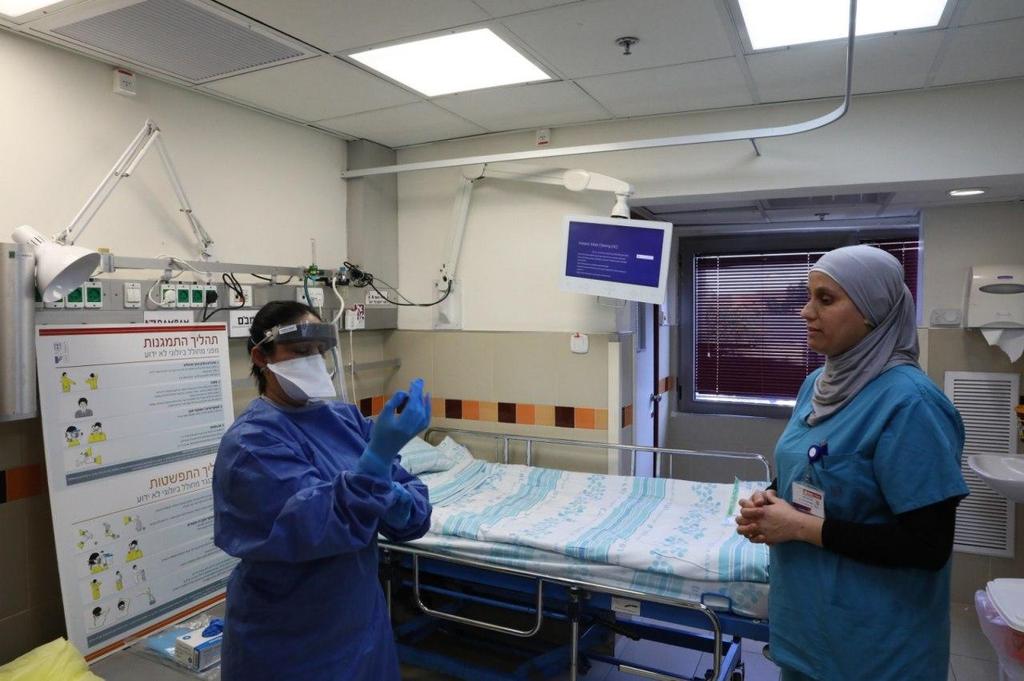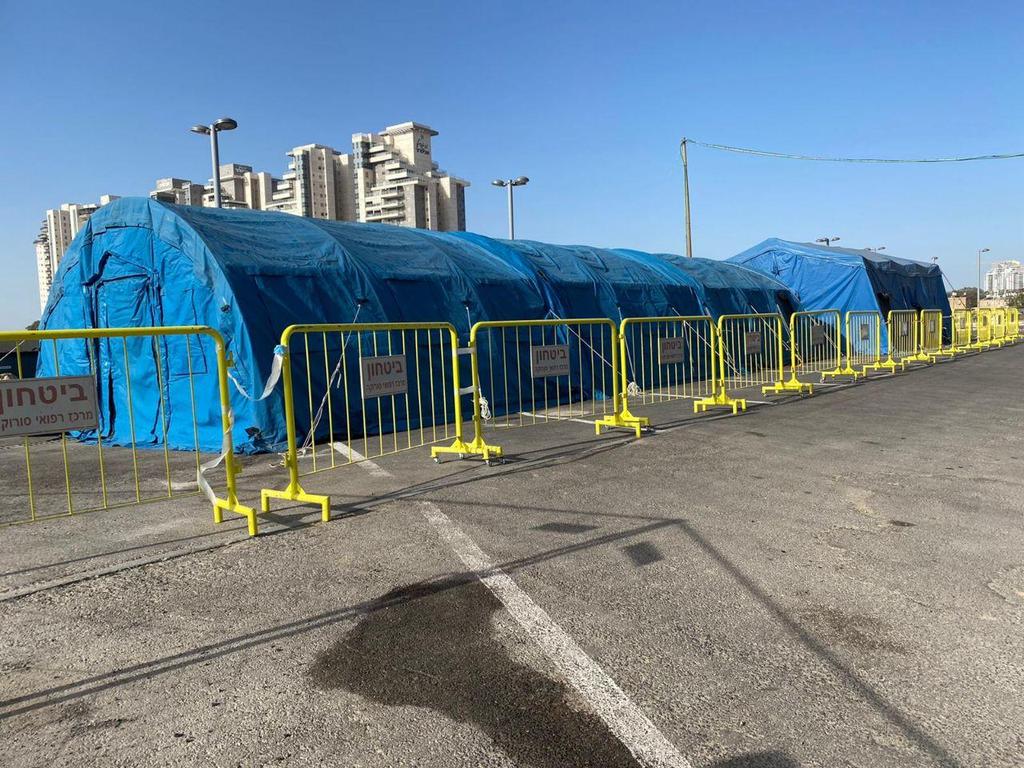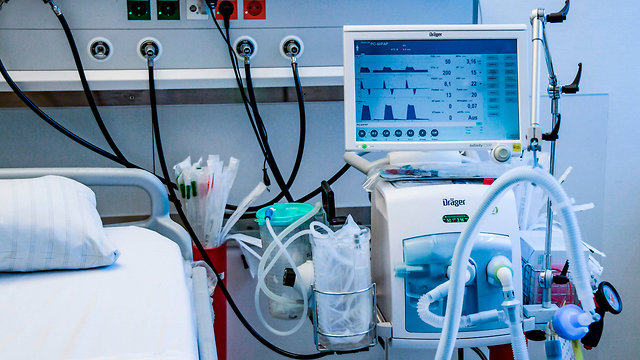Getting your Trinity Audio player ready...
Amid fears that the number of serious coronavirus patients needing respiratory assistance may exceed the number of available ventilators, Israel is facing complaints of imbalanced distribution of this life-saving equipment.
According to information obtained by Ynet on Monday, almost half of these life-saving ventilators - 1,119 units - have been distributed in the center of the country.
The Forum for the Promotion of Health in the Galilee launched a strong attack on the Health Ministry following the release of the numbers, highlighting the significant difference in the number of respirators allocated to the center of the country and those sent to the periphery.
3 View gallery


Medical staff at the coronavirus ward at Rambam Health Care Campus in Haifa
(Photo: Rambam Health Care Campus)
"All investments in the health infrastructure of the State of Israel were first and foremost directed to the center of the country," the forum said.
"Only after intense civil struggles did the government agree to develop services in the north as well. The residents of the north pay health taxes like everyone else but receive less, and may pay for this with their lives."
Health Ministry Director-General Moshe Bar-Siman-Tov said last week that Israel's healthcare system has only 2,864 available ventilators, including some owned by the military.
Of that number, there are 1,119 units in central Israel, including at Sheba Medical Center in Tel HaShomer, which has 250 ventilators - the most for any one site.
Other central Israel hospitals with more than 100 ventilators apiece are Beilinson Hospital in Petah Tikva with 174; Ichilov Hospital in Tel Aviv with 150; Meir Medical Center in Kfar Saba with 115 and Kaplan Medical Center in Rehovot with 113.
Wolfson Hospital in Holon and Yitzhak Shamir Medical Center in Tzrifin did not provide any information on their number of respirators.
There are at least 155 ventilators available in Jerusalem: 100 at Shaare Zedek Medical Center and 55 at Hadassah Medical Center, Ein Kerem. Hadassah Medical Center, Mount Scopus did not provide any information on the number of respirators it owns.
Northern Israel has 443 ventilators, including 140 at Haifa's Rambam Health Care Campus and Carmel Medical Center and 100 at HaEmek Medical Center in Afula. Galilee Medical Center, which provides healthcare services for more than 60,000 residents of Nahariya, has only 30 ventilators.
In Tiberias, which has a population of some 45,000, Poriya Hospital reported it had 20 ventilators, but this only refers to the number of respirators available to the coronavirus ward and the entire medical center.
Southern Israel has at least 361 ventilators, with Barzilai Medical Center in Ashkelon having 114 ventilators for more than 140,000 people in the city and adjacent localities, while Samson Assuta Ashdod University Hospital has only 56 ventilators to serve over 220,00 people.
Soroka University Medical Center in Be'er Sheva has only 191 ventilators to serve more than 200,000 residents and thousands more in nearby unrecognized Bedouin villages.
Yoseftal Medical Center in Eilat did not provide any information on the number of respirators it owns.
3 View gallery


A newly constructed wing for coronavirus patients at Soroka University Medical Center in Be'er Sheva
(Photo: Soroka University Medical Center)
Clalit Health Services, one of Israel's four state-mandated health organizations, reported that it has about 1,000 ventilators in its stock, 100 of which will be delivered to the provider's hospitals in the coming days.
The Health Ministry also said Sunday that 27 more ventilators arrived in Israel.
The head of Medical Administration at the Health Ministry, Dr. Vered Ezra, expressed a deep concern that a potential spike in the number of patients who were in serious condition and required artificial respiratory assistance would significantly exceed the number of available ventilators, with one bleak scenario predicting over 5,000 such patients filling Israeli hospitals within weeks.
The number of coronavirus patients in Israel with serious symptoms jumped on Monday to 4,347, with 80 in serious condition and 69 needing ventilators.
Fifteen Israelis have passed away due to complications related to COVID-19 and 134 have recovered.
The major concern in the healthcare system at the moment is a scenario similar to that in Italy and Spain, where the number of patients in serious condition needing respiratory assistance significantly exceeded the number of respirators available there.


